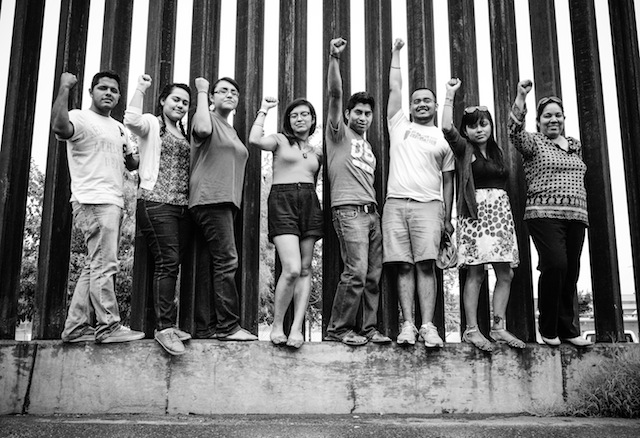The Obama administration is expected to announce a series of executive orders later today (8pm EST) regarding immigration policy. Many suspect that the President may provide relief from deportation and work permits to millions of US illegal aliens, among other changes. The best sketch of what we can expect has been provided by Fox News, which has allegedly received a ten point draft of what Obama will announce.
I have reservations about the Obama administration attempting to pass immigration reform via executive order. My chief concerns are that it sets precedent for greater executive discretion in migration policy, and that congressional Republicans will simply spend the remainder of Obama’s term trying to reverse ‘Obamigration’.
Co-blogger Nathan Smith and Bryan Caplan penned a more optimistic perspective on Obama’s use of executive powers back when the administration first announced the Deferred Action for Childhood Arrivals (DACA) program in 2012. Caplan seems less optimistic about this latest round of executive action.
My reservation should not be taken to mean that the Obama administration should stay quiet on immigration. Far from it, there are two major steps the administration could pursue if it were serious about being more pro-immigration.
1. Negotiating NAFTA 2.0
The North American Free Trade Agreement (NAFTA) is celebrating its twentieth birthday this year. The trade agreement improved trade relations between the United States, Canada and Mexico in several sectors, but it fell short on several others including labor mobility.
Obama could call up his counterparts in Mexico City and Ottawa and begin negotiations on expanding NAFTA to remove any remaining trade restrictions between the three countries. The issue of labor mobility was ignored in the initial phase of NAFTA to minimize political tensions, but surely after two decades we can begin dialogue on allowing the free movement of people across North America?
The Schengen Area in the European Union provides us with a prime example of how to, and how not to, implement a free movement zone among the North American nations. Ideally a free movement zone between the North American nations should allow the unrestricted movement of individuals, while not creating tax burden on the host nations to provide state welfare.
I have written on this possibility previously. Of related interest Freakonomics recently had a podcast on a US-Mexico ‘merger’.
2. Allowing the Federalization of Immigration Policy.
It is unlikely that we will see sweeping reforms of the immigration system at the federal level in the near future. Even if last year’s Senate immigration bill were passed the system would only be marginally improved. Things are more optimistic at the state level though, and several state legislatures have signaled willingness to pursue their own regional policies.
Unfortunately most state legislators have curbed their proposals in fear that the federal government won’t stand for their actions. If the Obama administration made it clear that it were willing to see states take a more proactive role in shaping immigration policy things might turn out for the better in the long run.
For comparison let us consider marijuana legalization efforts. At the federal level marijuana is still illegal, but the Obama administration has thus far tolerated its legalization by the states of Colorado and Washington. In the most recent midterm elections Alaska, Oregon, and Washington DC all passed legislation to legalize marijuana. At this rate it won’t be long before marijuana is legal nationwide.
Why not allow states the same leeway in immigration policy? If Utah wishes to grant legal status to its illegal alien population and create a guest worker program for its state, why not allow it to do so? If New York wants to grant citizenship to its resident migrants, why stop it? Allowing states to set their own migration policies might lead to a few of them adopting anti-migration policies, such as Arizona, but this is a small cost to be paid.
The Obama administration should set parameters under which the states can work and thereafter sit back and watch them experiment with migration policy.
I have previously written on the subject in We Need More San Franciscos and Thoughts on State-Based Immigration Reform . My co-blogger John Lee has also explored the concept as it relates to Canada’s immigration system . Alex Nowrasteh and his colleagues at the Cato Institute have teased the idea out in previous events , and policy analysis papers . The Reason Foundation has also begun toying with the idea recently.








